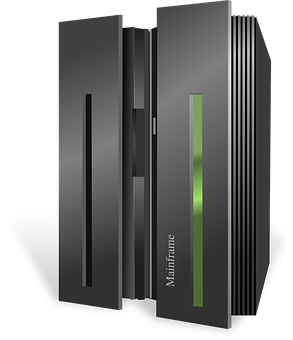There is not one standard way for the airflow and cooling inside the rack-mounted server rack or electronics enclosure. There are several differences when it comes to airflow patterns that are being founded. This includes the front intakes and other rear exhausts, as well as the side intakes and exhausts. The very low-wattage devices being utilized may not effectively employ the active cooling happening inside the server rack, but this use is only a passive thermal radiation happening and the convection to effectively disperse heat.
For the computer servers that are installed as rack-mounted, the devices or equipment generally take air from the front and it disperses it on the rear. This prevents the circular airflow where the exhaust air is being recirculated through and inside the adjacent device and this causes rare overheating.
Even if the open-frame racks are very least expensive, they also disperse the air-cooled equipment to other causes of ingress such as dust, lint, and other environmental contamination. The enclosed and sealed cabinet that has forced air fans installed allows the air filtration to protect the equipment housed inside the server rack from possible dust ingress.
The large server rooms are most often grouped the rack server cabinets together so that the racks being seen from both sides of the aisle are either front-facing or rear-facing. This then, however, simplifies the cooling process by supplementing the cool air in the front of the racks that are being collected from hot air coming from the rear of the racks. The aisles in the server rack may be enclosed into the cold air containment tunnel so that the cool air does not travel to the other parts of the building where it is not demanded or it needed to be mixed with the hot air – however, this makes it more inefficient. With this in mind, the raised or false floor cooling inside the server rooms are serving a similar purpose, they allow the cooling airflow equipment through the underfloor space going to the underside of the enclosed rack cabinets.
There is one difficulty that comes with the forced air fain cooling when to comes to the rack equipment – the fans has the possibility to fail because of the age or dust. The fans themselves can become very difficult to replace. In the case of the network equipment, it may be very necessary to unplug 50 or more cables from the equipment device and be able to remove the device from the rack. Which then in return, disassemble the device chassis to be able to replace the fans.
However, in addition to this, the rack equipment has been effectively designed to make the fan replacement become very easy just by using the quick-fan trays that can be effectively accessed without the removal of the cables or the equipment itself form the rack. In addition to this, there are some cases that there is no need to turn off the device so that the operation can become uninterrupted during the replacement process.
With this in mind, the holes placed unto the holes in the posts are being arranged vertically in a repeating stets of three, that comes with the center to center separations of 0.5 inches (12.70 mm), 0.625 inches (15.88 mm), 0.625 inches (15.88 mm). The hole pattern thus repeats every 1.75 inches (44.45 mm).
Finally, for the cooling process of the server racks, they are arranged either by being tapped (usually 10-32 UNF thread, or, less often, 6mm metric) or they can contain square holes provision for the cage nuts.






